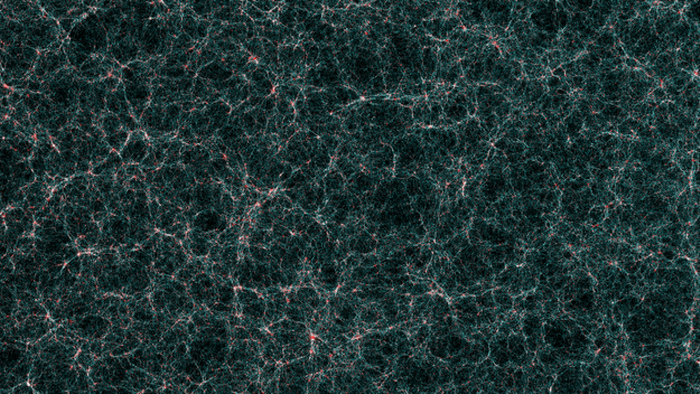
ESA’s Euclid mission, to be launched in 2020, is set to provide a unique window into the evolution of our 13.8 billion year-old Universe. It will map the history of the Universe’s structure by studying billions of galaxies. In this way, it will be able to probe the nature of invisible dark matter, which makes itself known by the forces it exerts on ordinary matter, and the mysterious dark energy that drives the accelerating expansion of the Universe.
In order to prepare for the huge and complex outpouring of measurements, teams of Euclid scientists have created the largest simulated galaxy catalogue ever produced, the Euclid Flagship mock galaxy catalogue.
It is based on a record-setting supercomputer simulation of two trillion dark matter particles, and contains more than two billion galaxies distributed over the 3D space that Euclid will survey.
The simulation reproduces with exquisite precision the emergence of the large-scale structure of the Universe – galaxies and galaxy clusters within the wispy network of the cosmic web that comprises both dark and ‘normal’ matter.
The simulation also mimics the complex properties that real sources display, such as their shapes, colours and luminosities, as well as the ‘gravitational lensing’ distortions that affect the light emitted by distant galaxies as it travels to us.
An excerpt of the simulation is shown in this image, spanning from today’s local Universe (left) back to when it was about 3 billion years old (right), when clusters of galaxies were beginning to form.
Zooming in provides finer and finer detail. Central galaxies, which populate the centre of dark matter ‘halos’, are coloured green. Satellite galaxies, which reside in the most massive halos in the highest density peaks of the underlying dark matter, are indicated in red.
Armed with this new virtual universe, scientists will be able to best prepare for the mission and also eventually assess its performance. Moreover, it will be an essential tool to develop the data processing and the science analysis software needed for such a data-heavy mission.
The release of the simulated galaxy catalogue was announced by the Euclid Consortium on 7 June.
This article has contributed by ESA and the simulation was developed on the Piz Daint supercomputer, hosted by the Swiss National Supercomputing Centre, by a team of scientists at the University of Zurich led by Joachim Stadel. The teams that built the resulting catalogue are based at Institut de Ciències de L’Espai (ICE, IEEC-CSIC) and Port d’Informació Científica (PIC) in Barcelona, in collaboration with the Cosmological Simulations Working Group led by Pablo Fosalba (ICE, IEEC-CSIC) and Romain Teyssier (University of Zurich).ientífica (PIC) in Barcelona, in collaboration with the Cosmological Simulations Working Group led by Pablo Fosalba (ICE, IEEC-CSIC) and Romain Teyssier (University of Zurich).


